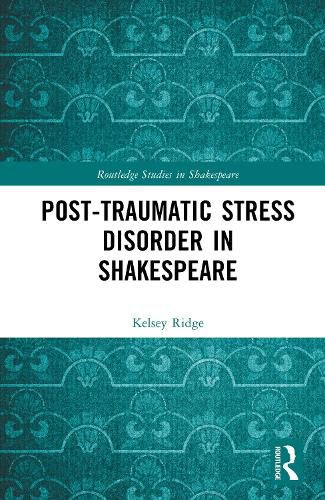Readings Newsletter
Become a Readings Member to make your shopping experience even easier.
Sign in or sign up for free!
You’re not far away from qualifying for FREE standard shipping within Australia
You’ve qualified for FREE standard shipping within Australia
The cart is loading…






Post-Traumatic Stress Disorder in Shakespeare combines literary criticism, performance studies, psychiatric literature, trauma studies, and disability studies to examine the presentation of PTSD in Shakespeare's plays. This volume takes as case studies 1 Henry IV, Othello, Macbeth, Much Ado About Nothing, and Troilus and Cressida. This character-based, interdisciplinary approach places Shakespeare's texts and their production histories in conversation with current scientific research by blending literary analysis, medical and psychosocial research, memoirs and patient accounts, and performance history. This research deepens our understanding of representations of trauma in early modern literature and reveals what the artistic representations of trauma and PTSD in the early modern period can tell us about the history of this condition. It reminds us that people lived with PTSD long before the APA codified the condition in the 1980s; it places this condition in a longer historical continuity. With this knowledge, we can better consider the role Shakespeare can play in how we respond to trauma and psychological injury now.
$9.00 standard shipping within Australia
FREE standard shipping within Australia for orders over $100.00
Express & International shipping calculated at checkout
Post-Traumatic Stress Disorder in Shakespeare combines literary criticism, performance studies, psychiatric literature, trauma studies, and disability studies to examine the presentation of PTSD in Shakespeare's plays. This volume takes as case studies 1 Henry IV, Othello, Macbeth, Much Ado About Nothing, and Troilus and Cressida. This character-based, interdisciplinary approach places Shakespeare's texts and their production histories in conversation with current scientific research by blending literary analysis, medical and psychosocial research, memoirs and patient accounts, and performance history. This research deepens our understanding of representations of trauma in early modern literature and reveals what the artistic representations of trauma and PTSD in the early modern period can tell us about the history of this condition. It reminds us that people lived with PTSD long before the APA codified the condition in the 1980s; it places this condition in a longer historical continuity. With this knowledge, we can better consider the role Shakespeare can play in how we respond to trauma and psychological injury now.